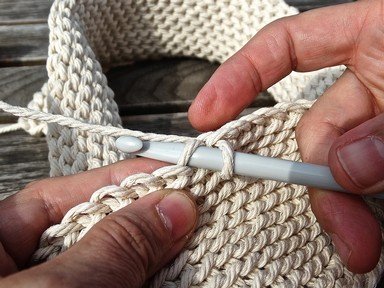Quiz Answer Key and Fun Facts
1. The art of crochet originated in which of the following ancient civilizations?
2. There are some people who believe that crocheting may be related to a type of handicraft found in the Near East where a material is stretched across a frame which is used as a base for the craft. What is the name for this type of crochet?
3. Irregardless of the origin of the craft, the word "crochet" is from French. What does it mean?
4. The terms used in the making of crochet handiwork are universal.
5. What term is used for the Japanese art of crocheting to make figures?
6. For those that do not crochet or knit, it may be difficult to tell a difference between the two. What is NOT a typical difference between crocheting and knitting?
7. During which era in history did making Irish lace become a popular cottage industry?
8. Queen Victoria crocheted scarves for soldiers.
9. Today it is easy to find crochet materials in ready-to-use packages like skeins. In the past, however, yarn was commonly wound in an oval shape and twisted. What was this type of yarn package called?
10. The art of crocheting has seen a resurgence in popularity in the past twenty years. This renewed interest has given way to a new pastime called yarn bombing. Which of the following words best describes yarn bombing?
Source: Author
ponycargirl
This quiz was reviewed by FunTrivia editor
Bruyere before going online.
Any errors found in FunTrivia content are routinely corrected through our feedback system.
